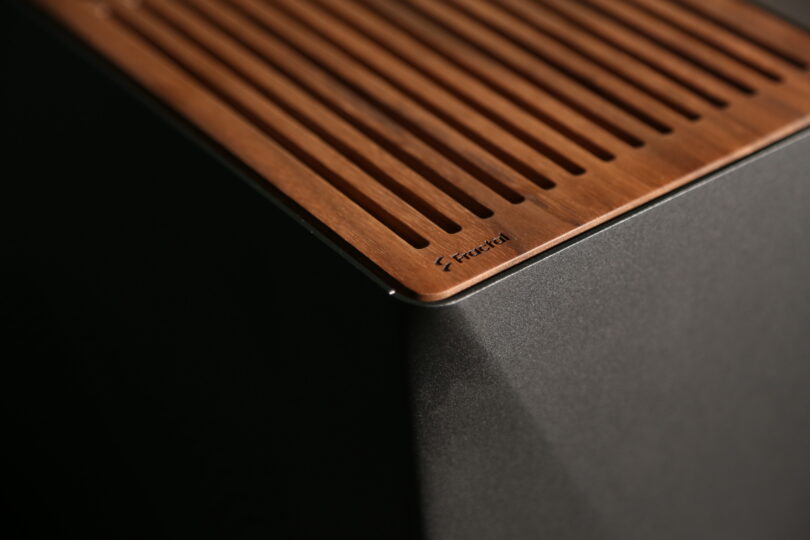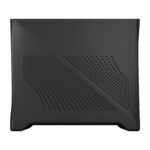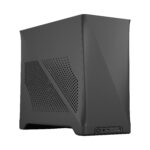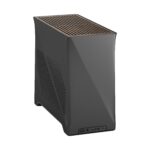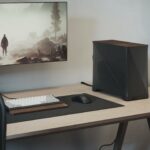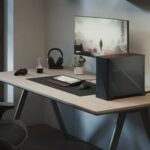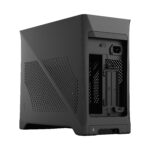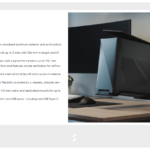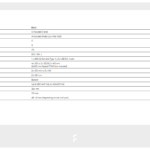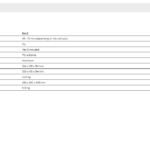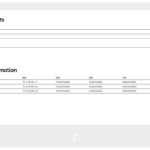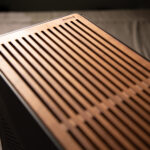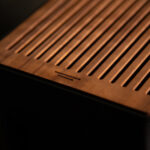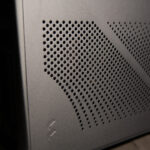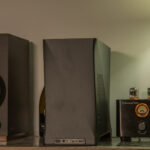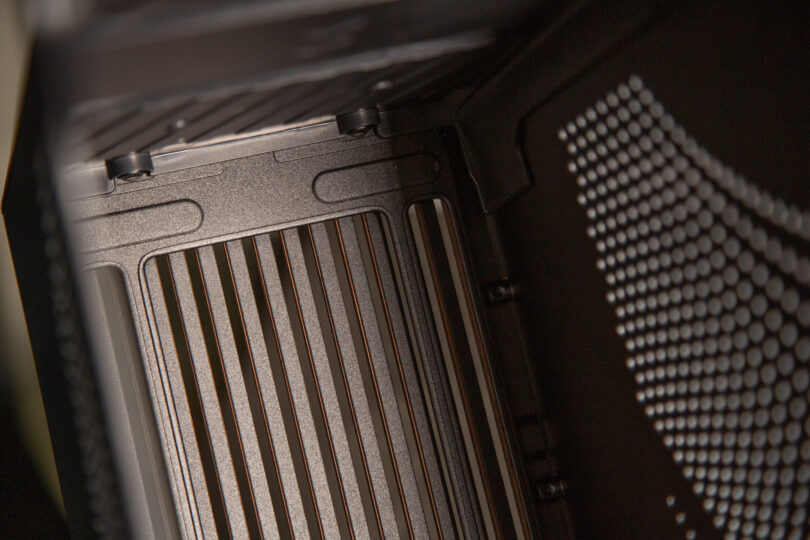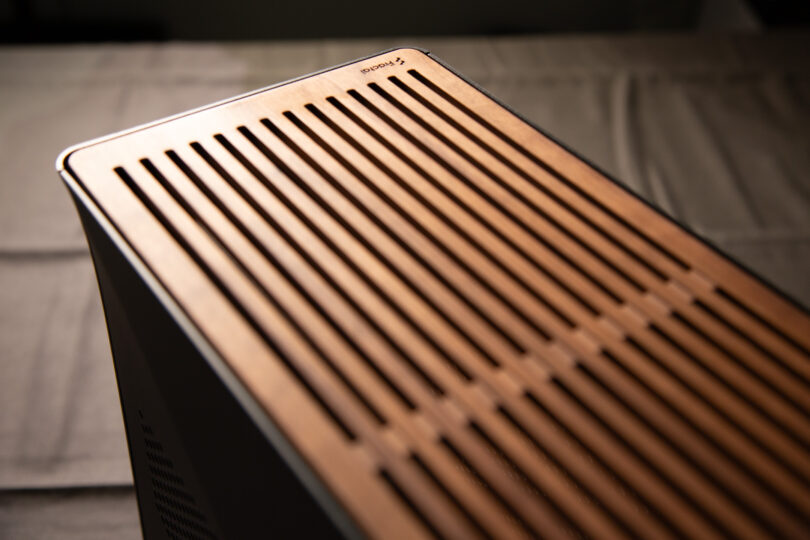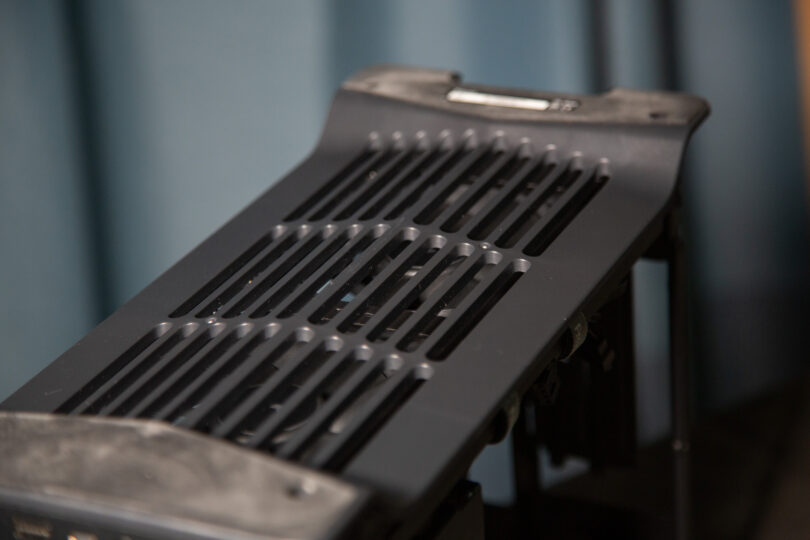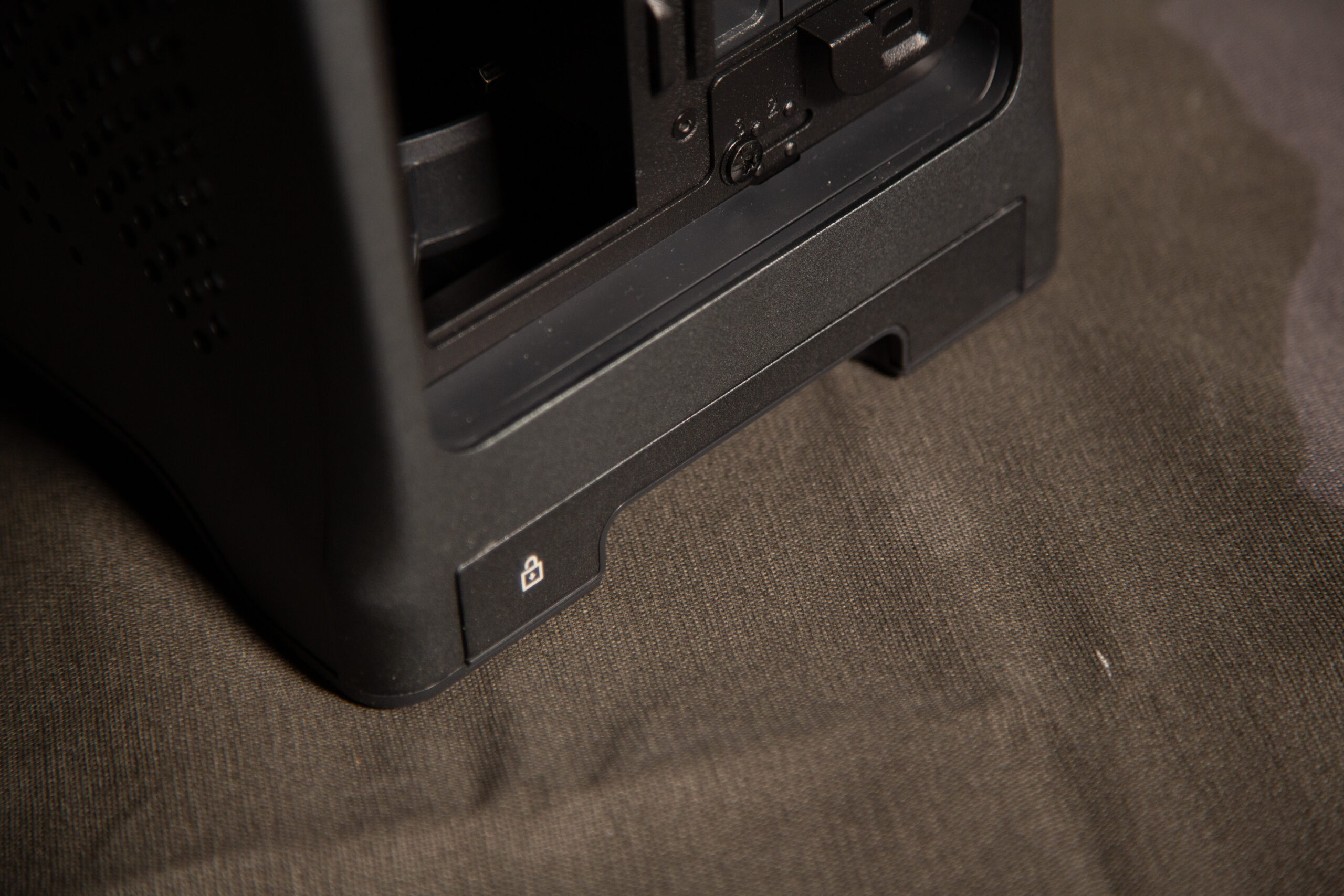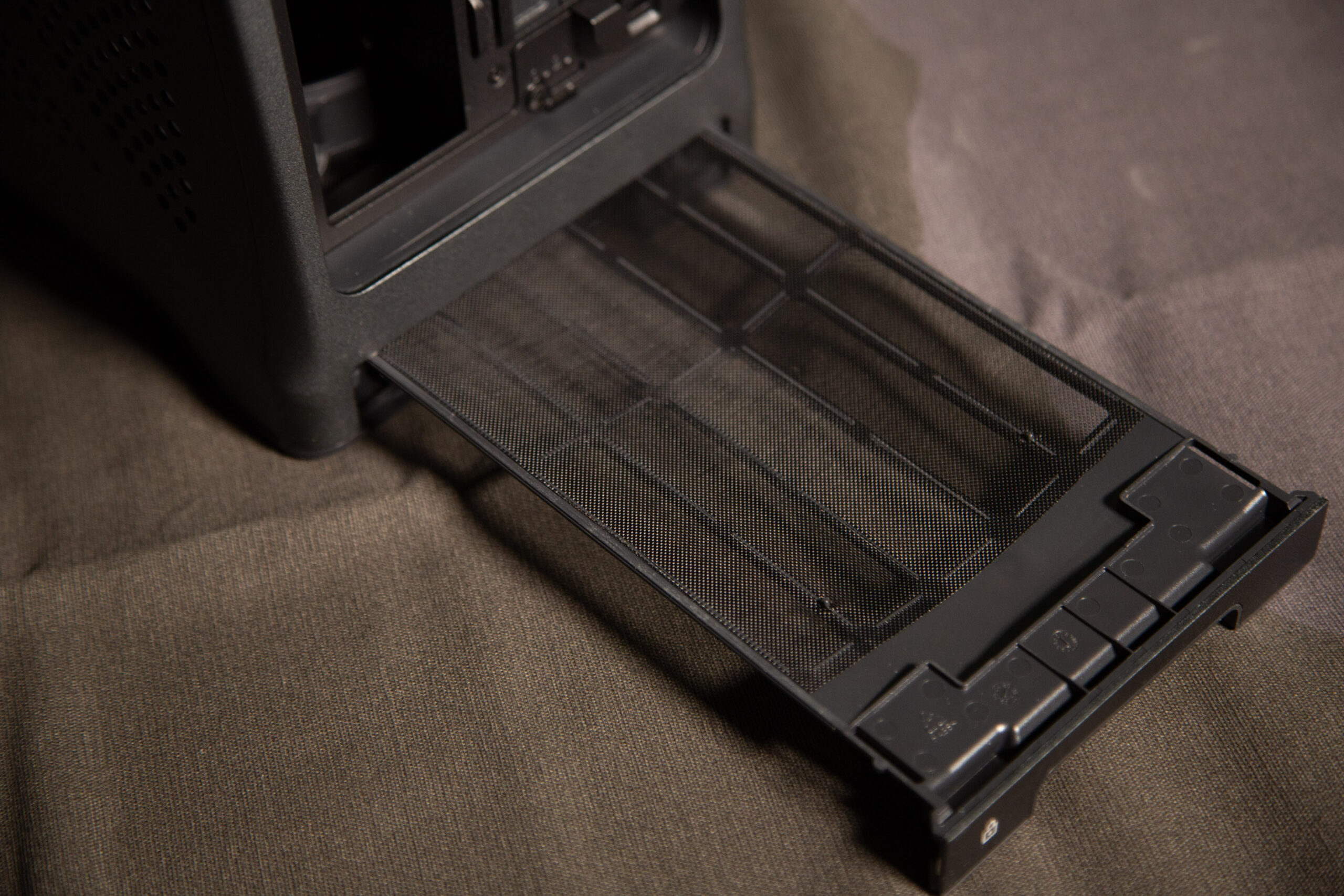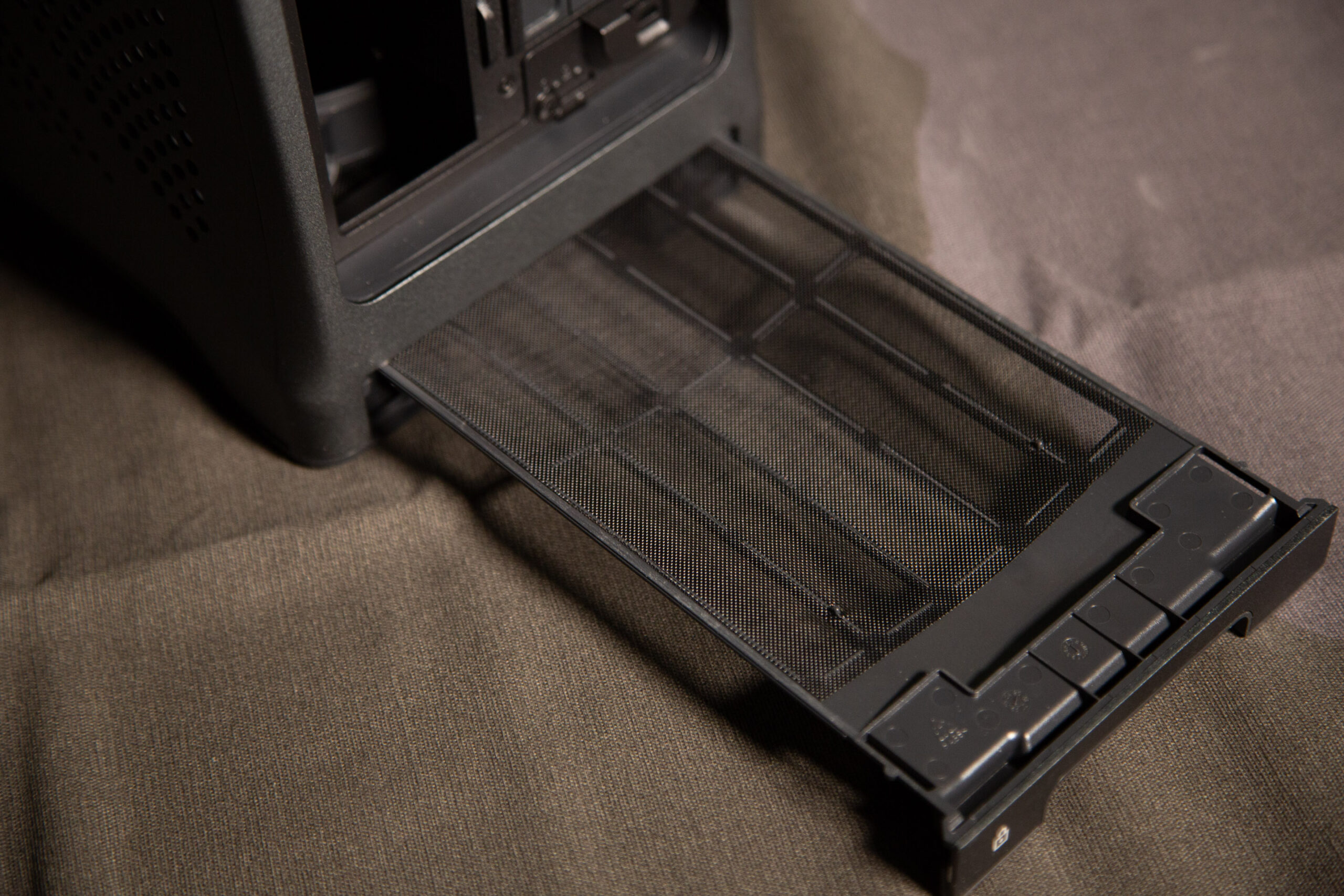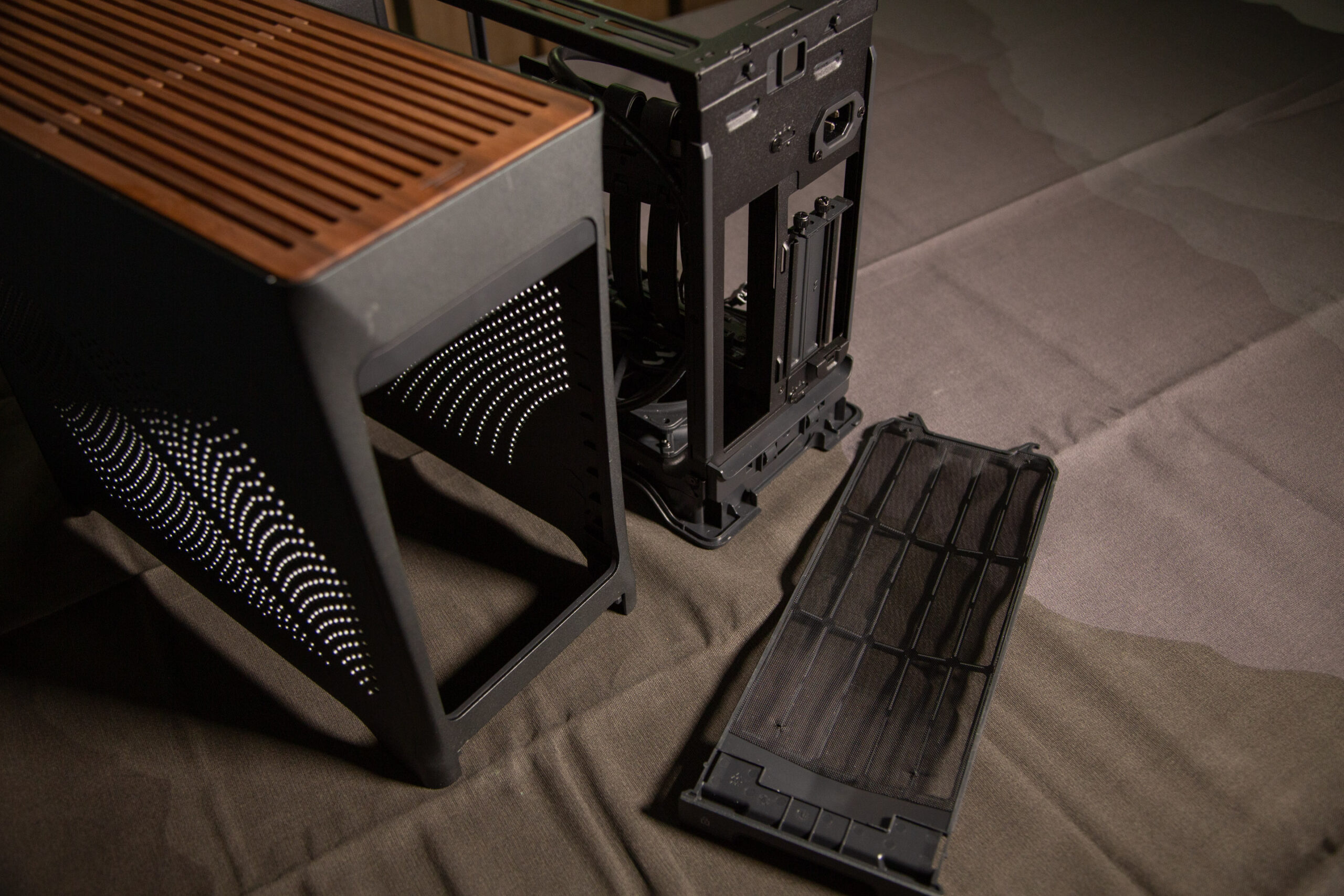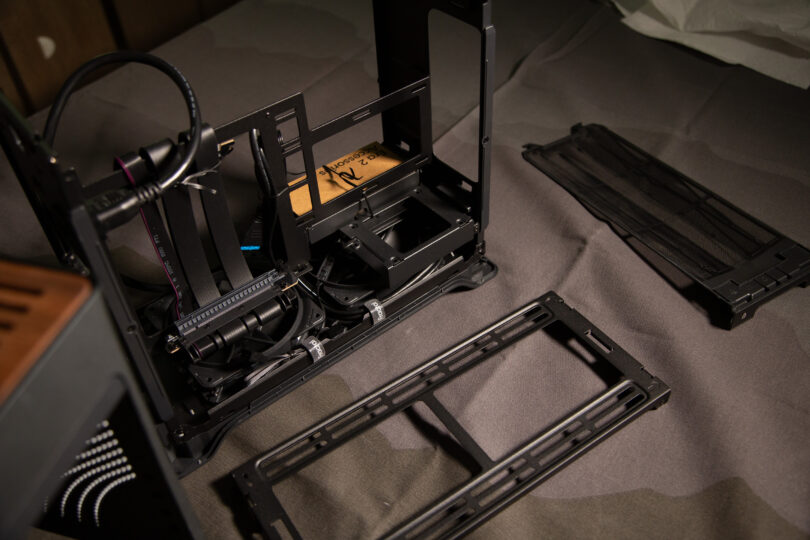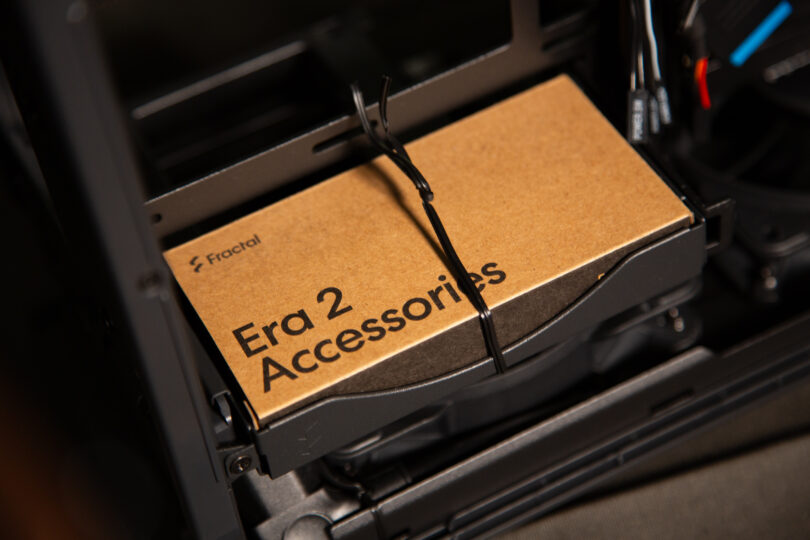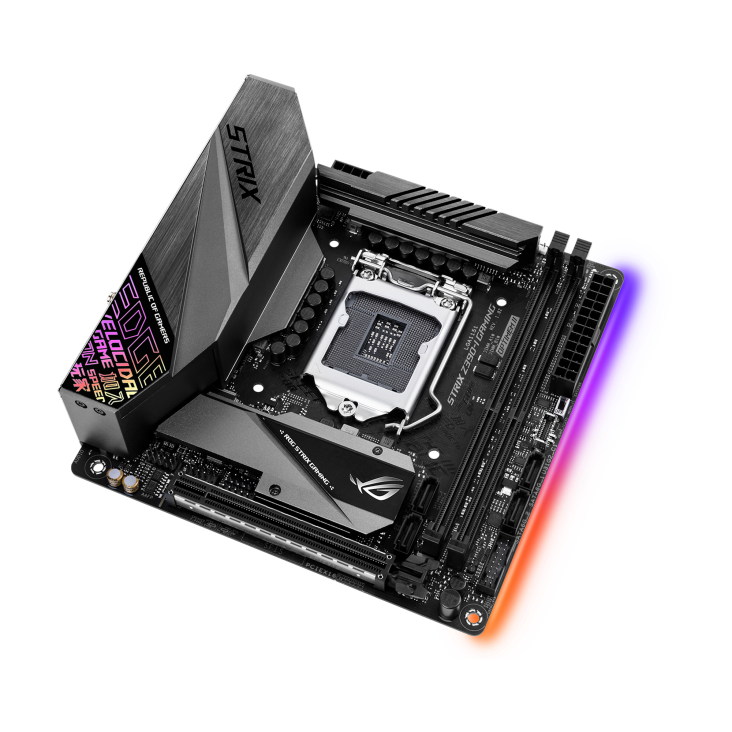Fractal Design is no stranger to the small form factor community. The Ridge and Node lines have been solid options for those looking for a simple entry point into SFF for years. The Node 202 was one of the better options for console style cases, and I’ve built several myself. However, Fractal Design met some push-back when the original Era ITX launched. It was a striking design, but had difficulty cooling components to a point of limiting hardware options rather severely. Fractal Design is looking to rectify this with the Era 2 which features enhanced airflow and cooling, as well as updated aesthetics.
Before we delve into the review, I want to remind readers of our case review philosophy as it differs from most others. Case selection in the small form factor world is primarily driven by aesthetics with performance being a secondary concern. In layman’s terms, you buy the case you like the looks of and try to cram hardware into it. As such, I will be focusing less on raw performance than I will on build-ability, quality, packaging, and design.
Fractal Design sent us the Era 2 as a review sample with no mandates or expectations, nor did they exert any pressure. I always acknowledge a company that is looking for an honest review rather than an advertorial. My own personal bias going into this review is a general liking of Fractal Design’s aesthetic, as well as ownership of several Fractal Design cases ranging from older Node models to the full sized Pop Silent that currently hosts my photography and videography editing rig.
Design Function and Specifications
The Era 2 is a sandwich style case. It features an adjustable central spine that has three settings:
- CPU clearance of 70mm and GPU width of 48mm (2.4 Slots)
- CPU clearance of 63mm and GPU width of 56mm (2.8 Slots)
- CPU clearance of 55mm and GPU width of 63mm (3.1 Slots)
While designed to allow for decent mid-range air-cooling, the case is really aimed at users who will be using an AIO. The ERA 2 supports up to a 280mm AIO with dimensions for the top mounted radiator of 140 x 307 mm max. The cooling fans are meant to be mounted under the radiator as exhaust.
Air intake is handled by two bottom mounted 120mm fans blowing upward. Fractal provides two Aspect 120 PWM fans pre-mounted in the Era 2. Additional cooling is via perforations in the side panels, and exhaust flow is via the long slates of the wooden top.
The motherboard is mounted inverted on the left side of the case similar to the Dan A4-SFX and Loque Ghost S1. The GPU is connected via a PCI-E 4.0 Riser cable, and mounted in a horizontal-vertical configuration again similar to the Dan A4-SFX and Loque Ghost S1.
The PSU is a surprise. In most cases using this configuration, the PSU exhausts hot air toward the top of the case. The Era 2 inverts the PSU and has the hot air exhausting directly into the incoming cool air of the bottom intake. This may seem counterintuitive at first, but in practice it works well. When mounted with the PSU exhaust facing upward toward the AIO, the PSU’s exhaust can create a hotspot that will cause CPU temperatures to rise. Essentially, you are pointing a hairdryer at your radiator and wondering why your CPU isn’t cooling well. In the Era 2, the incoming cool air can bring the temperature of the PSU exhaust down prior to being drawn through the AIO.
Finally, there are four mounting locations for 2.5 inch drives. Two are located on the inner spine of the chassis, and two are located in a separate housing. Most SFF users have moved on to NVME drives at this point, however having the option to use older drives is good. There was a missed opportunity by Fractal to add 2.5 inch drives to the front of the chassis akin to the NCASE M1.
Design Aesthetic
The Fractal Design Era 2 has a unique design; one that is difficult for smaller manufacturers to emulate. At first glance it may look asymmetrical, however it’s just a trick of the eye. The corners of the case match the opposite corner. This creates and organic sculpted look; as if the metal was melted into place like blown glass. Contrasting this are linear edges on the front and sides of the case. Speaking of the sides, they are now heavily perforated to allow air to flow into the case easier than the Era ITX. The top is adorned with a wood panel that lends a sense of elegance. The allows the Era 2 to look equally at home on the desk of a CEO or as minimalist game PC in a home theater. It avoids the RGB world of gamer-ism, while also still offer opportunity to add a bit of flare with subtle lighting from internal components.
The centerpiece of this design is the outer shell. It is 4 panels of anodized aluminum, backed by ridged plastic, and secured as a single unit that lifts cleanly off the inner chassis of the case. When attached, it feels solid with acceptable panel gaps. When removed, it gives easy access to the heart of the build. The panel gaps of the shell were well done save for a single section on the CPU side-panel toward the front of the case. Upon close inspection, I observed a slight difference in panel gaps of about a mm compared to the other side. It’s minuscule, but noticeable if you look extremely closely. In practice, it’s the best shell design I’ve worked with, but more on that later.
I’m showing my age with this but the Era 2’s form reminded me of the Frog Design Acer Aspires of the 1990s, albeit modernized with far better materials. There was a unifying flow to those old Acer designs that people enjoyed beyond the function of the PC itself. It was a design that simply looked good everywhere, and was pleasing to the eye. It was a system that could be displayed rather than placed; something that added to the décor of the room it was in. Fractal Design has managed to achieve the same feeling with the Era 2.
The anodized aluminum of my Charcoal Gray test sample had a matte finish with no obvious manufacturing faults. While matte in design, the case had enough reflectivity to take on some of the colors shades of ambient lighting. Bathing the Era 2 in a warm light such as an Edison Bulb, the case reflected a more amber and brown hue. Blueish toned lights gave the case a more metallic sheen and modern industrial blue tone.
Fractal Design offers the Era 2 in three color options currently. Charcoal Grey is the model I tested, however silver color is offered, as well as a midnight-blue. The blue color is, as themed for this design, subdued and not garish.
I strongly encourage Fractal Design to experiment with future color options, but have no qualms with the ones offered. My wife suggests a deep purple or plum.
Build Quality
For $199, there is a level of build quality that the Small Form Factor Network community will expect. The Era 2 does a good job meeting those expectations.
The exterior anodized aluminum shell is strong, weighty, and rigid. I measured it with my calipers as ranging in thickness from 1.78 to 1.91mm depending on the area of the panel. Some variation of panel thickness is normal with metals at this production scale, and it wasn’t visible to the eye. The shell fits smoothly over the inner frame, and the mechanisms worked without issue even after I cycled it 2o times. The panel gaps to the frame were good albeit not quite to the standard of a case such as a Louqe Raw S1, however the smoothness of operation far exceeded the Louqe offering.
The inner plastic that combines the four panels of the shell was solid, with little worry of it breaking from routine use.
The Walnut wood on the top of the case is backed by metal and screwed into place. I measured the wood’s thickness to range from 4.5mm to 4.62mm thick on my calipers. Small strips of rubberized material are placed along the metal grating to avoid damage. Fractal laser etched their logo and name into the wood, as well as two horizontal stripes to show the user where to press down to release the panel. The wood itself showed no signs of rot, was well stained, and had its grain flowing with the design rather than against it. There was no cracking of the wood on our sample unit.
The inner frame was good but not great. It was light weight and well painted, but it flexed as I built a system into it. The flex wasn’t severe, but it was enough to make me think carefully about how I would move the frame as I built it. An example would be placing a hand behind the motherboard tray in order to ensure it doesn’t flex as I screwed down the motherboard itself. The Era 2 frame lacked the rigidity of the of the System 76 Thelio frame, but was more rigid than the frames of the CCD MI-6 and Loque Raw S1. It felt roughly on par with the SSUPD Meshlicious.
The final portion of the frame I want to address is the lower ventilation area, aka the bottom of the case. Here was my first surprise in that the ventilation area flexed more than I expected when I picked up the case, even with it completely empty. The material is a convex plastic; which is fine considering how it also forms the locking mechanism for the dust filter. However, it does have flex to it; far more than the NCASE M1 V5 I had for comparison. I picked up the frame after adding a motherboard, PSU, and 280mm AIO, and balanced it on just two of the slats that make up the bottom. They did not break, but I could feel movement.
If you are going to be transporting the system frequently, take care not to put weight on that area. It’s very easy to put too much pressure via your fingertips on the slats. It may not break immediately but overtime it will fatigue.
Overall the build quality of the Era 2 is very good. There is a minor panel gap noticeable on close inspection, flex in the lower intake, and some deviation in the panel width. That said, the panels themselves are solid with a robust feel, the release mechanisms worked without fail, the artistic portion of the metal work are well executed, and the walnut wood was perfect.
Building in the Fractal Design Era 2
Fractal’s engineers really took the time to think about how to make the case easy to build in. Building in SFF cases is the number one reason people are afraid to consider them. This should be far less of a concern for the Era 2. Cables come pre-routed, there are numerous tie-down points, and thought has been put into the experience. However, it’s accessing all of the internals that was a real joy.
To pull the outer shell off the Era 2, simply remove the slide out fan filter from the back of the case that doubles as a lock for the shell. The shell slides easily upward, revealing the chassis of the Era 2. Next, remove the top AIO bracket of the internal chassis by simply using two built-in pull tabs on the front and back of the case. The top AIO bracket slides off easily. There is a single screw necessary to remove the PSU bracket.
Mounting the motherboard and GPU are all standard affairs for a sandwich style case. The PSU connects to the bracket, and slides into place which is a refreshingly easy method. The AIO mounts to the top bracket, which then slides in place without tools. Be careful to align it properly as I found the rear portion of the bracket can stick.
Overall, mounting the hardware was an easy and simple affair. Next, it’s on to wiring.
Wiring the system is easy for a sandwich style PC. Fractal recommends flat, ribbon style PSU wires. I did not have a PSU with those on hand. Instead, I had a Corsair SF750 with braided cables. I was able to make a main loom of cables and fit them between the PSU and motherboard with very little difficulty. This still allowed for room for the AIO tubes. As always, you should pre-connect the PSU motherboard cables prior to installation.
However, all is not perfect.
The first issue I had was that the main PSU extension cable would rub against the AIO fans. The best way to solve this would be a simple fan grill on the fan itself. Failing that, the extension cable, while stiff, has enough flexibility to route in front of the motherboard and across the spine. This removed the fan’s interference at the cost of aesthetics.
The second issue I discovered was specific to the motherboard I was using. For this build I used a ROG STRIX Z390-I GAMING motherboard paired with an Intel i9-9900K. This is the same board and processor I use for CPU cooler testing, and is a known and reliable unit. However, unlike most ITX boards, the jumpers are located toward the rear I/O of the board rather than the front. The Era 2’s provided front panel jumper cable was simply two short by about 40mm. I had to remove from its original position, and reroute it against the GPU backplate. On a GPU such as the RTX 2000 reference series or the AMD Radeon 6000/7000 series that backplate can get very, very hot. I highly recommend to Fractal Design to lengthen this cable or offer an extension.
The remaining cables were able to be tucked away within the system, and the nearly tool-less design made reassembly easy.
To summarize, Fractal Design did a very good job making the sandwich style design very accessible to more novice builders. The Era 2 is the easiest AIO sandwich style case I’ve ever built. It’s easier than a Louqe Ghost S1, Lian Li A4-H20, and absolutely simple compared to a Thorzone Mjolner or SLATE Case. It’s easily one of the most accessible cases for semi-experienced beginners in the SFF arena.
Performance and Noise
I originally did performance testing on the Era 2 and found it to be good overall in regards to both noise and performance. However, I have an opportunity to test a more diverse set of hardware, and I’m spinning the performance section off into a separate article. Part 2 will be out soon.
The very short take is that a combination of a 7800X3D and high power GPU are very doable in this case. The GPU, depending on power usage, will have higher fan speeds and thermals than in a larger case, which may translate into slightly lower clock speeds and slightly more noise. Placing a 13900K or 14900K in the Era 2 is going to require some thermal compromises to clock speed as well, albeit not much. The Ryzen 9000 series should also work well.
I have a new calibrated microphone coming for noise testing, and will report back on that in a later time.
Build Recommendations:
A lot of the standard build recommendations apply to the Era 2 that normally apply to SFF builds.
- Try to use custom cables. It makes life a lot easier.
- Take time to wire your build. Plan it out.
- Attach cables to the motherboard prior to installation.
- Shoot for a mid-range, upper-midrange, or gaming build. Expect thermal issues to reduce clocks if you jam a 14900K and RTX 4090 into the system and run them at 100% at the same time.
- Take advantage of the design of the Era 2 and use the AIO cooling. If not, install top fans to help exhaust heat.
- If your motherboard has front panel headers toward rear IO, you may need extensions.
Conclusion
Fractal Design has a very accessible and beginner friendly design on their hands with the Era 2. It’s a good place to start for those dabbling into the SFF arena, as well as a good place to rest for experienced SFF people who just want to keep it simple. Build quality is good, and there are a lot of thoughtful touches within the design. The aesthetics of the case are refined, mature, and avoid the “gamer look”. Personally, I like them; even though I’m not a fan of asymmetry.
There are a few things Fractal Design could improve on, but overall the Era 2 is a case I can highly recommend.

